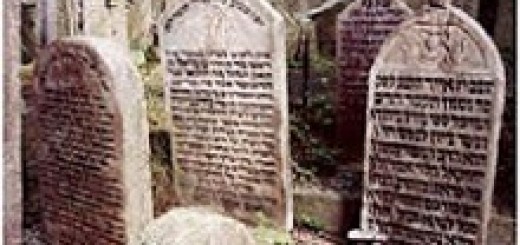By Avner Friedmann
This week’s parsha tells us that during the forty years of travel and encampments in the Wilderness, the twelve tribes were organized around the Mishkan (Tabernacle) in formations of three tribes in each direction, each tribe under its own special banner. The verse states[1], “The children of Israel shall camp, each man by his banner, according to the insignias of their paternal households; they shall camp at some distance from the tent of meeting…”
Rashi explains[2] that their positions surrounding the Mishkan were the same as the positions that Yaakov assigned his sons when he instructed them on how to escort his bier to his ancestral burial place in the Land of Israel. He informed them[3] that their formation around him would be identical to the tribal formation that would take place later, during the forty-year sojourn of the Jewish people in the desert. Each banner had a colored insignia as assigned to that tribe by Yaakov, as it is written[4]: “According to the insignias of their paternal households.” The banners included the distinct colors of the three tribes in the group. Moreover, the colors corresponded with the color of each tribe’s gem that was set in the breastplate of the high priest (Kohen Gadol).
We also find[5] that Israel’s camp below, in this world, had its spiritual counterpart in the heavenly realm, where the throne of HaShem is surrounded in all four directions by four armies of angels. Each army of angels consists of one leading angel and two additional ones, for a total of twelve angels—three on each side.
The banners and their leaders were organized as follows: In the East the leader was the tribe of Yehudah, corresponding to the angel Uriel above; in the South the leader was the tribe of Reuven, corresponding to the angel Michael above; in the West the leader was the tribe of Ephraim, corresponding to the angel Rafael, and in the North the leader was the tribe of Dan, corresponding to the angel Gavriel. The camp of the Levites was in the middle, surrounding the Mishkan, which represented the Throne of HaShem, the resting place of the Divine Presence (The Holy Shechina) on earth[6]. The very same tribal formation was also represented by the twelve stones that Yaakov put around his head on Mount Moriah, when he was traveling to Charan and had his famous dream[7].
The Medrash[8] tells us that when HaShem revealed Himself on Mount Sinai, He was accompanied by 220,000 Angels, each with its own banner. When the children of Israel beheld them, they had a strong desire to be arranged in the same formation. Out of love for the Jewish people, HaShem said, “They are My children and My armies below. I will grant them their wish.” He instructed Moshe to pattern the encampment of Israel after the Heavenly formation. HaShem informed Moshe that once the children of Israel would build the Mishkan, He would come to dwell among them below, just as He dwells above, as it is written, “They shall make a Sanctuary for Me and I will dwell amongst them”[9].
Each tribe and every individual amongst them, were unique and had their own special mission. On the other hand, they all were united as a single nation. The banners of the angels that the Jewish people beheld at Mount Sinai symbolized their individual and unique missions, and when Israel saw these angels, they too desired to have clarity in knowing their own individual mission and purpose. This is why they wanted to have their own banners[10]. Indeed, every Jew is born with a unique mission given to him by HaShem. He has the potential to make a unique contribution that only he and no one else can make. This being the case, every Jew is very special in the army of Hashem.
What this means to us, is that in addition to learning Torah and observing the mitzvot–which is something that every Jew must equally follow–each individual also possesses a special role unique to him, which he needs to identify. Moreover, once he finds his role, he must be careful to follow it, as it is written[11]: “Each man by his banner”.
However, how does a person identify his unique role? This is done in two ways, one positive and one negative. On the positive side, a person needs to identify and pursue his G-d-given gifts and talents and use them to serve HaShem. On the negative side, he needs to overcome what he finds most difficult in serving HaShem and work on correcting it. These areas hold the greatest potential for a person to determine where his contribution lies.
Each Jew, through his unique banner, is assigned a special mission to reveal HaShem’s essence in the world. This is his contribution in making the world a dwelling place for HaShem. When we all do what we need to do, we will finally merit the complete revelation of G-dliness, with the true and complete redemption through the coming of Moshiach speedily in our days, Amen.
[1] Bamidbar 2:2.
[2] Bamidbar 2:1-2 (from Tanchuma Bamidbar 12,13, and 14).
[3] Rabbah 100:2.
[4] 2:1.
[5] Zohar, Vayechi 241a, Zohar, Shemot 5b, and Rabbah, Bamidbar 2:6,8,10.
[6] See 2:1-34 for detailed description of the tribal formation around the Mishkan.
[7] Zohar, Vayeitzei 148a.
[8] Tanchuma, Bamidbar 12,13,14. Rabbah, Bamidbar 2:6,8,10.
[9] Teruma 25:8.
[10] Netivot Shalom, Bamidbar.
[11] 2:2.






















